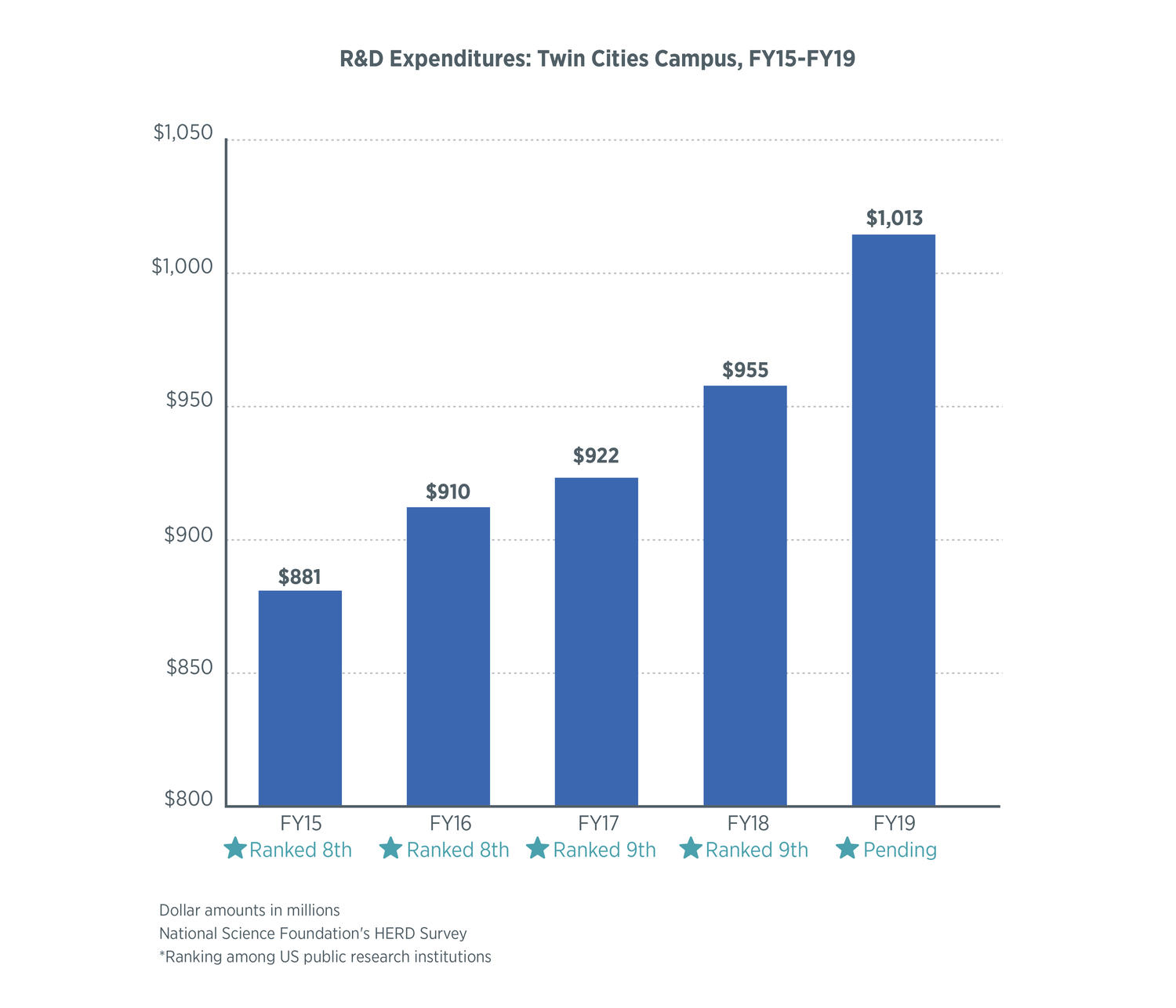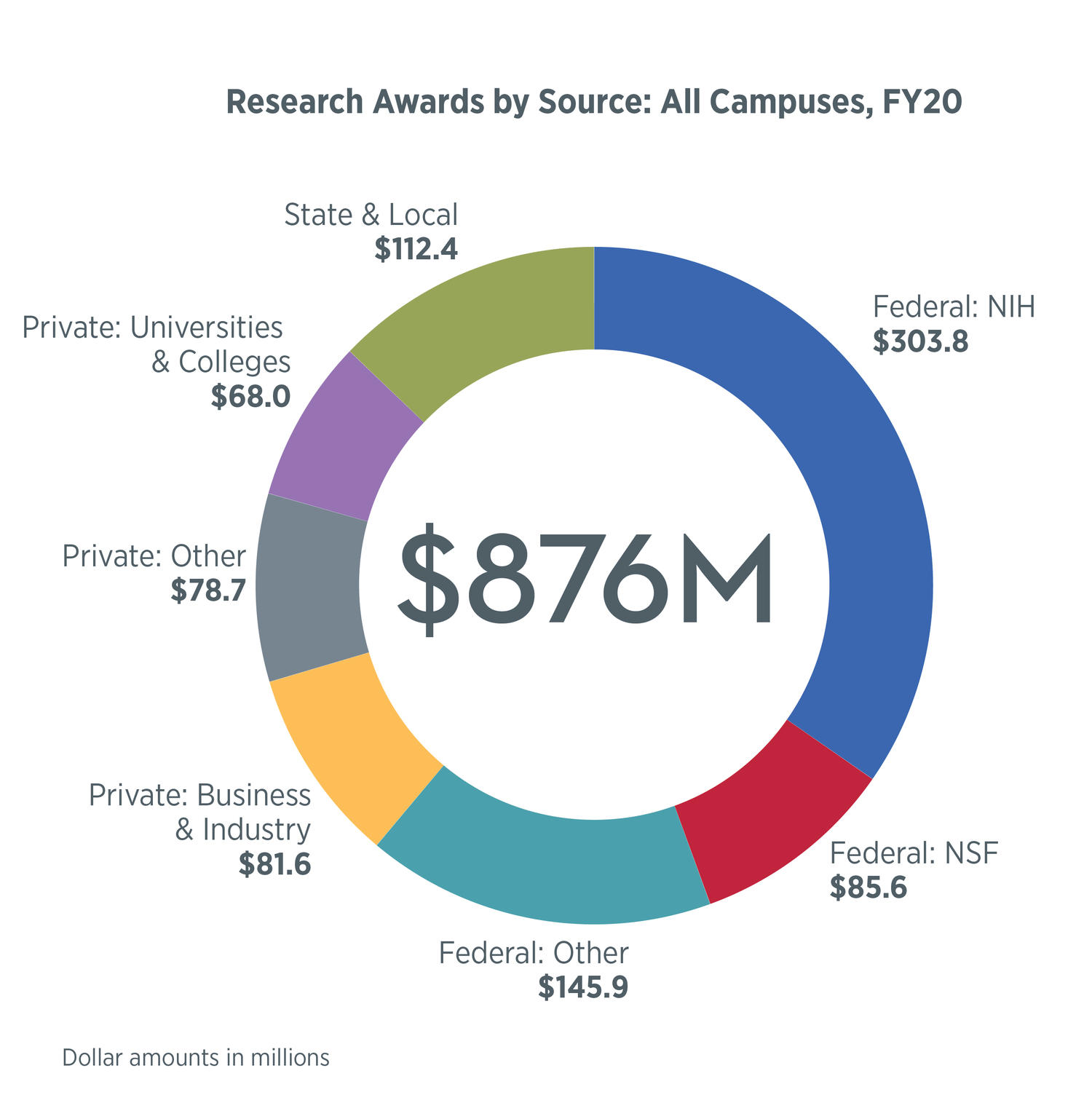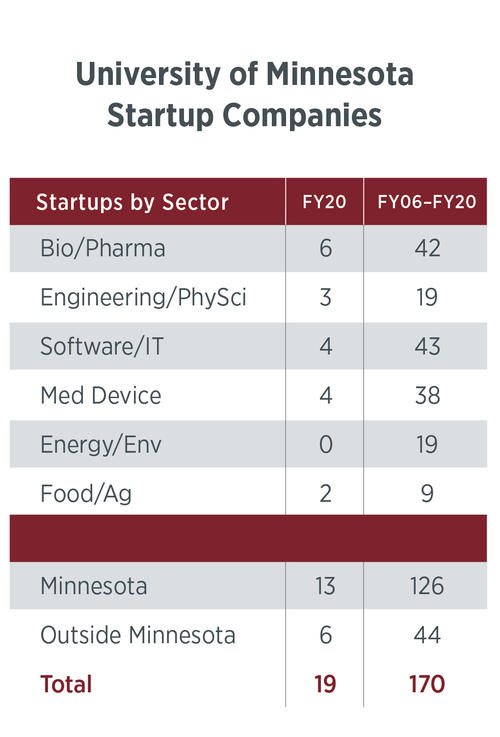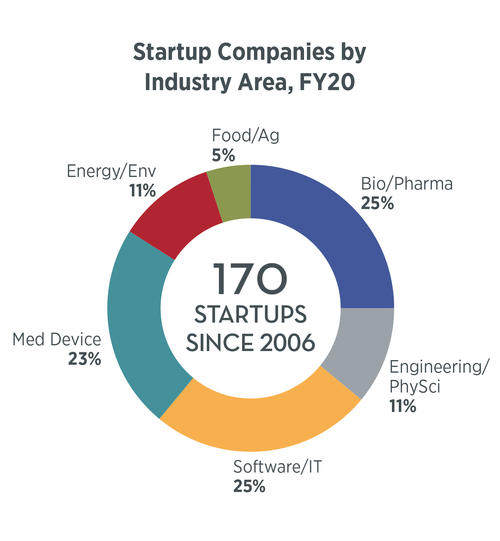University of Minnesota R&D expenditures break the billion-dollar mark for the first time

The University of Minnesota’s research and development (R&D) expenditures exceeded $1 billion for the first time in Fiscal Year (FY) 2019 and external research awards in FY2020 to University researchers remained strong, even with interruptions created by COVID-19, according to the most recent figures available, which were released today.
As a major research university, the University of Minnesota advances knowledge across a wide range of fields, yielding new solutions, ideas, medical treatments, and other technologies that can then be commercialized for the benefit of the public. The University also released technology commercialization statistics and rankings that reflected its national leadership in bringing its researchers’ inventions to market, including numerous innovations in the fight against COVID-19.
Total R&D expenditures in FY2019, the most recent year available, were $1.013 billion for the Twin Cities campus, marking the first time that the University’s research enterprise exceeded $1 billion. If all five University campuses are included, University research expenditures were $1.04 billion in FY2019.
In FY2020, external research funding awarded to the University of Minnesota was up by $12.9 million, or 1.5 percent from the previous year, for a record total of $876 million in awards for all five campuses. (See the Methodology section below for more information on the difference between external research awards and all R&D expenditures.)
“In a year where at one point we froze most of our research operations because of COVID-19, it’s remarkable that our research awards kept pace and even grew,” said Vice President for Research Christopher Cramer. “Many of our researchers threw themselves into new pandemic-related research projects, from determining the circulation patterns for indoor air particles, to monitoring drinking water for the virus, to understanding the effects of pandemic stay-at-home measures on domestic violence. Others, such as those already studying coronaviruses, genomics, or filtration science, for example, were able to shift their existing work quickly to focus on the SARS-CoV-2 virus and COVID-19 disease.”
University researchers were awarded 27 sponsored research grants related to COVID-19 in FY2020, including an $18 million grant from the State of Minnesota to provide rapid widespread coronavirus testing for Minnesota residents in collaboration with the Mayo Clinic, a $4.2 million grant from the National Institutes of Health (NIH) to coordinate UK and EU clinical trials for treating COVID-19 with a combination of anti-inflammatory and anti-viral medications, and a grant from NIH that helped University researchers identify early on how the novel coronavirus enters cells.
Another 75 COVID-19-related research proposals have been submitted to funding agencies, and in addition the University awarded 87 rapid response grants for its researchers using repurposed internal funds in FY 2020.
Other research highlights:
- In externally sponsored research awards, federal agencies awarding the most support were NIH ($303.8 million) and NSF ($85.6 million);
- All federal agencies’ share of awards remained at roughly 60 percent, in keeping with previous years;
- Vice President Cramer will present a fuller analysis of FY2020 research and technology commercialization statistics, including the NSF-HERD R&D expenditures survey national rankings, to the University’s Board of Regents on December 10, 2020;
- Research statistics from FY2020 and previous years are available on the UMN Research Statistics Website.
Technology Transfer
The University’s technology transfer work has recently been highly ranked in an analysis by Reuters (UMN was 22nd globally in their 2019 World's Most Innovative Universities ranking and 2nd among Big Ten public institutions); the George W Bush Institute (UMN was ranked 8th in the US for “innovation impact” and 2nd among Big Ten Public Institutions); and the National Academy of Inventors (UMN was 17th in the world for Universities Granted US Utility Patents and 4th among Big Ten public institutions).
The University licenses relevant research to companies for the development of new products and services that benefit the public good, foster economic growth, and generate revenue to further support its mission. In its efforts to commercialize technology created by faculty and staff, the University saw continued strength, tying the record 19 startups it spun out last year, and boosting its number of new licenses for UMN technology, the number of inventions disclosed by its researchers, the number of revenue generating agreements, and the amount of sponsored research commitments from companies. The number of patents issued for University technology also remained steady. (See University of Minnesota’s Research Statistics site for more detail.)
The University’s shift to COVID-19-related research work also impacted its technology commercialization work, with key products included on a website listing more than a dozen University inventions including:
- a low-cost emergency ventilator that is FDA approved and has an open-source design available at no cost. The University collaborated with Boston Scientific and United Health Group to manufacture and distribute 3,000 of the Coventor emergency ventilator;
- a portable aerosol hood that limits virus containing droplet and aerosol transmission by covering a COVID-19 patient’s upper body and drawing air through a HEPA filter to shield the physician during respiratory procedures; and
- a deep learning Artificial Intelligence tool that supports radiologists and physicians in rapidly identifying COVID-19 patients through analysis of chest x-rays to differentiate patients with COVID-19 from other patients.
“With COVID-19, this past year was the ‘year of the pivot’ at the University of Minnesota,” said Rick Huebsch, executive director of Technology Commercialization. “Our University’s researchers and our office’s technology transfer professionals met the challenge of COVID-19 with renewed dedication, flexibility and entrepreneurship. Those efforts exemplify our two-fold focus on technology commercialization and the public good and the tech commercialization statistics this past year illustrate that.”
Other FY2020 Technology Commercialization Highlights:
- The University signed onto COVID-19 Licensing Guidelines aimed at getting University innovations that could fight the virus and the COVID-19 pandemic into the marketplace as quickly as possible;
- Discovery Launchpad, a business incubator for University of Minnesota startups launched in 2018, had 18 participants, with 12 completing the program in FY2020;
- Discovery Capital, a program to help provide matching investment capital to University of Minnesota companies, evaluated 14 opportunities, investing a total of $1.2 million in six startups;
- Three UMN startups received Minnesota Tekne Awards: Startup Division – Anatomi; AgTech Division – Calyxt; and Special SBIR Honoree – NovoClade;
- The University has now spun out 170 companies since FY2006, with operations across a diversity of fields and 74 percent being Minnesota-based (See startups chart and table).
Methodology
R&D expenditure data lags by a year but is an accepted standard for comparing universities’ research activity. The R&D Expenditures number adds together the actual amount an institution spent on research, both from external R&D awards and internal R&D funding, in a previous year. The National Science Foundation publishes an annual survey of all US research institutions’ R&D expenditures, and the edition covering FY2019 research R&D expenditures is expected in November. The University of Minnesota ranked ninth among US public research universities in last year’s survey.
R&D Awards totals, by contrast, add together the amount of external R&D funding awards an institution’s researchers compete for and receive in a given year, and can include amounts awarded that are expected to be spent in future years.
- Categories:
- Campus Affairs
- COVID-19









